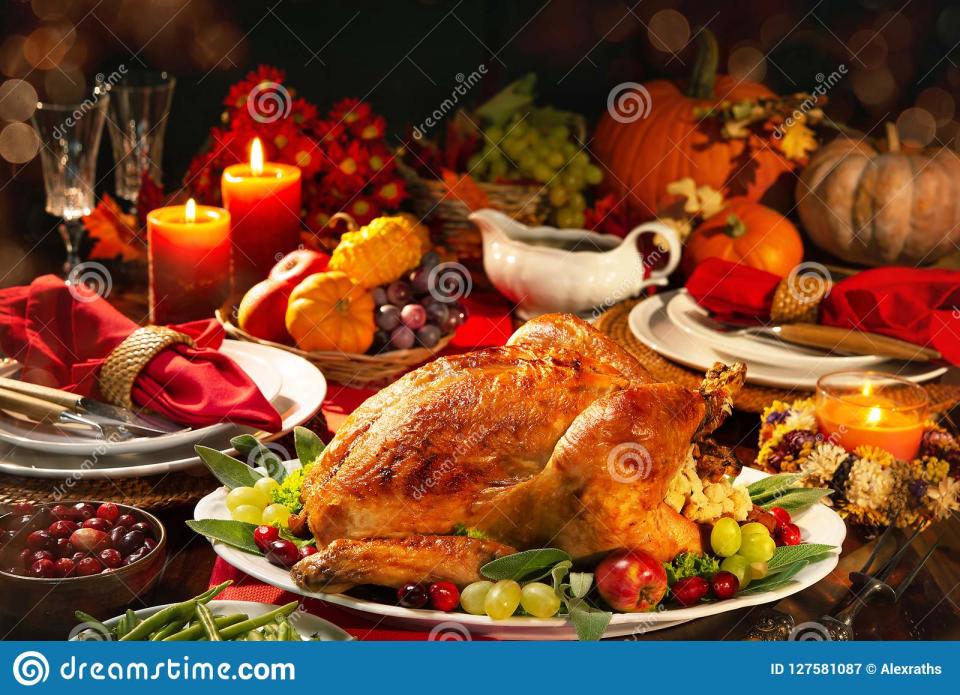How Thanksgiving traditions have evolved: Of turkey, games, music and more
- Oops!Something went wrong.Please try again later.
Tradition has it that Americans began roasting turkeys for Thanksgiving when William Bradford, governor of the Plymouth Colony, reported that the settlers discovered in the nearby forest that, “There was great store of wild turkeys, of which they took many,” and presumably served them at the first Thanksgiving.
The Pilgrims roasted their turkeys on an open fire, and early Delaware colonists did the same. By the middle of the 19th century, however, cast iron stoves, fueled by either wood or coal, became more common in Delaware kitchens. and Delaware newspapers began to print instructions for cooking the perfect Thanksgiving turkey.
The Wilmington Holiday Journal advised in 1879 that after cleaning the turkey, “rub the inside with an onion, or rinse it thoroughly with a pint of water, in which a teaspoonful of soda is dissolved, then wash with clear cold water, crush the point of the breastbone with the rolling pin; this gives the fowl a fine round appearance. Truss as you would a chicken: stuff it with bread crumbs, seasoned with pepper, salt, any sweet herb, and two or three ounces of butter.”
Prior to the invention of aluminum foil, the newspaper advised, “When the breast is brown, protect it with a piece of paper.” When the turkey was brought to the table, the newspaper commented, “Fried sausage or thin slices of ham, fried crisp, may be curled and laid around the turkey. Stewed cranberries or stewed apples should be served with it.”

The Wilmington Holiday Journal also had instructions on how to prepare a boiled turkey. After the bird was cleaned, “substitute oysters, chopped celery, or celery seed for the sweet herb in the dressing. Wrap the turkey in a towel; put it in a kettle of boiling water, and boil steadily but slowly until it is cooked, which will be from two to three hours, unless the turkey is very large. Serve with celery or oyster-sauce according to the stuffing.”
In the early years of the 20th century, Thanksgiving traditions began to change. Spectator sports, such as football and baseball, had grown to the point that many people went to watch the games before sitting down for a Thanksgiving feast.
On Nov. 28, 1916, the Wilmington Evening Journal commented, “The old custom of serving the Thanksgiving dinner at two o’clock had the advantage of bringing the entire family together early in the day, but did give the housewife the extra work of preparing for an extra and entirely unnecessary meal in the evening … many of us have gradually set the hour back until many of us are now serving a five o’clock dinner.”
For those who did not attend sporting events and arrived for dinner early, the newspaper advised, “Plan games and music for various groups of guests. If there is a good reader in the party it is always enjoyable to have a good short story or one-act play read aloud. We want the young people to have definite recollections of good stories as well as good foods.”

In 1916, World War I had begun in Europe, and the conflict generated a round of inflation in the United States. The Evening Journal noted, “The prices [of turkeys] being asked by the farmers are such as have never been reached in many years on a day preceding Thanksgiving … Prices of ducks, chickens, celery, cranberries, eggs, potherbs, and sage went higher than ever ... The majority of the farmers sold [turkeys] or 40 cents a pound.”
The newspaper advised starting a discussion on, “the high cost of living,” which would surely spark a spirited debate around the Thanksgiving table today as it would have done in 1916.
THANKSGIVING: Struggling to make ends meet? You're not alone. Here's how to get a free Thanksgiving meal
THANKSGIVING: 6 places to score tasty pies for your Delaware Thanksgiving
Principal sources
Charles Martyn, The Pilgrim Fathers of New England: A History, New York: American Tract Society, 1867, p. 32
Holiday Journal, Nov. 26, 1879.
Evening Journal, Nov. 28, 1916.
This article originally appeared on Salisbury Daily Times: How Thanksgiving traditions evolve: Of turkey, games, music and more

